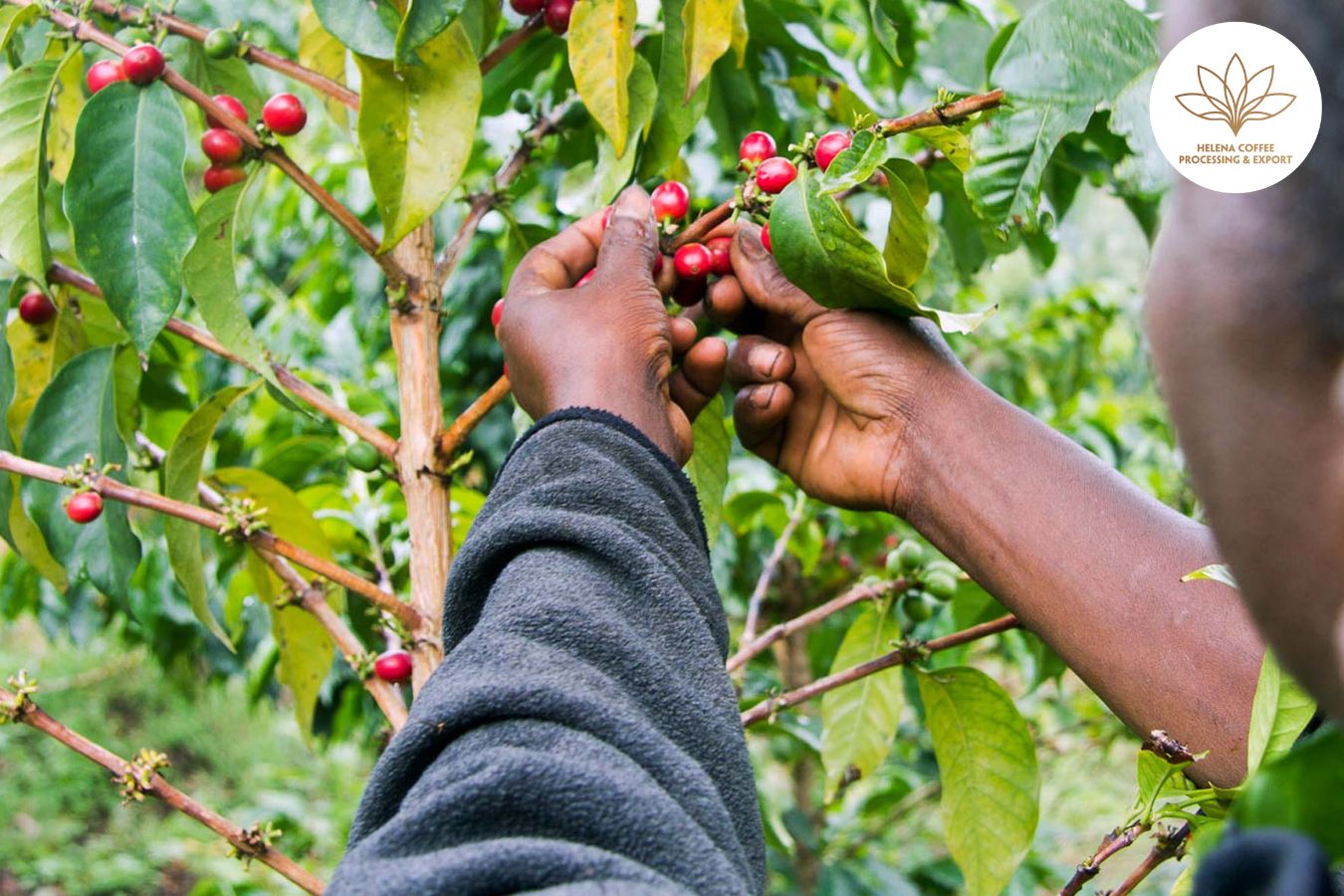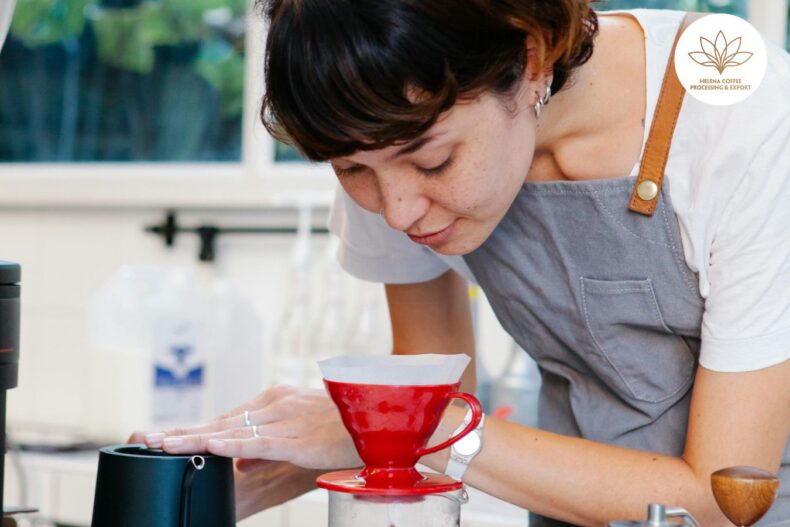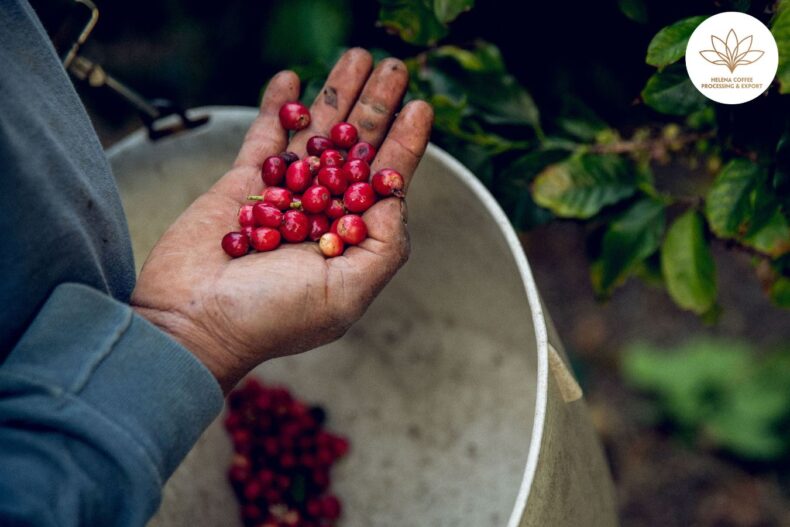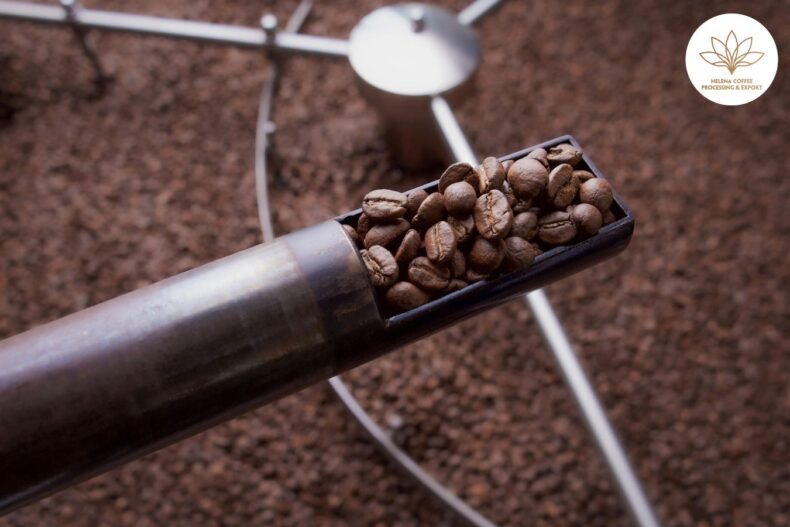
Nestled in West Africa, Liberia is bordered by Sierra Leone, Guinea, Cote d’Ivoire, and the Atlantic Ocean. As Africa’s oldest republic, it declared independence in 1847, recognized internationally in 1862.
Despite peaking at 209,000 60kg coffee bags in 1985, coffee production has since declined, with many farmers turning to more profitable crops like cocoa and natural rubber. Yet, Liberia is notable for its Coffea liberica, a species known for large cherries that enhance sweetness and aftertaste, recently gaining prominence in the specialty coffee sector.
The Story of Coffee in Liberia
The intricate history of Liberia plays a crucial role in understanding the dynamics of its coffee sector. This West African nation, like others in the region, boasts a rich history of human habitation that stretches back to the Lower Paleolithic era, evidenced by archaeological findings of early human activity.
The demographic landscape of Liberia underwent significant transformation in the early 19th century, largely influenced by the interventions of the American Colonization Society. Established in 1816, this organization aimed to resettle freed African American slaves in Africa. Despite its purported mission of providing a new beginning for these individuals, the society was rooted in racist ideologies, seeking to remove free Blacks from the United States.
The migration to Liberia, whether voluntary or coerced, was met with a mix of opposition and support among African Americans. Some saw it as an escape from the systemic racism and oppression in the U.S., while others criticized the underlying prejudices of the resettlement program.
Upon settling in Liberia, these American migrants and the indigenous populations, including the Kru and Grebo communities, experienced profound social and cultural rifts. The establishment of plantations by the migrants often led to the exploitation and forced labor of indigenous people, mirroring the oppressive systems they fled from in the U.S.
Despite these tensions, Liberia managed to carve out its identity on the global stage, electing Joseph Jenkins Roberts as its first president in 1847 and achieving international recognition as a sovereign nation by 1862. However, the underlying social divisions persisted.
The economic landscape of Liberia, initially buoyed by investments from the United States, diversified into various exports, including small but significant amounts of coffee. Yet, the trajectory of the country’s development was dramatically altered by a military coup in 1980, followed by a devastating civil war that began in 1989.
This period of unrest not only shattered the nation’s economy but also deeply impacted its agricultural sectors, including coffee production, exacerbating the challenges faced by the country and leaving a lasting imprint on its coffee industry amidst the broader struggle for peace and stability.
A Deep Insight into the History of Coffea Liberica
Despite Liberia’s primary cultivation of robusta coffee, the country is perhaps more famously associated with another coffee variant: liberica. As highlighted in the 2022 study titled “The re-emergence of Liberica coffee as a major crop plant” liberica is native to the vast tropical territories of West and Central Africa.
Historically, liberica coffee seeds ventured beyond their wild origins in the 1870s, spreading from nations such as Ghana, Liberia, and Sierra Leone to broader horizons for commercial coffee cultivation. This expansion notably shifted several Southeast Asian countries’ focus to liberica cultivation over arabica, in response to the devastating coffee leaf rust outbreaks that threatened the latter.
The study further reveals an intriguing phase between 1880 and 1900, where liberica’s global production volumes rivaled those of arabica in certain regions. This surge in popularity was largely due to liberica’s resilience and high yield potential, thriving at lower altitudes while producing sizable cherries, thereby gaining favor among farmers.
Nevertheless, the ascendancy of liberica was ephemeral, hampered by a burgeoning disfavor linked to its quality perception. The primary critique centered on the cherries’ large size, which posed significant processing challenges, leading to a pronounced decline in its demand.
Delving into the World of Coffee Production in Liberia
Robert Kollie serves as the esteemed Chair of the Board at Green Future Agro Inc., positioned within the verdant landscapes of Liberia. He sheds light on the diverse coffee cultivation in the region, noting the prevalence of robusta and liberica beans.
The heartlands and northern expanses of Liberia, specifically in areas such as Nimba, Lofa, Bong, Grand Cape Mount, River Gee, and Margibi, are renowned for their robust coffee production. Kollie further elaborates on the supportive role of their cooperative. By distributing seedlings and planting essentials to local farmers and offering indispensable technical advice, they pave the way for budding entrepreneurs in the coffee sector to accurately forecast their ventures’ potential costs.
Yet, the shadows of past conflicts loom large, leading many to forsake their coffee farms. In a concerted effort to rejuvenate Liberia’s coffee industry, the International Trade Centre (ITC) has stepped in, dispersing over 4,400 seedlings to the agricultural community. Despite these efforts, the path to restoration is fraught with challenges.
Tyler Papula, co-founder and CEO of Liberica Coffee Company, combines his roles with a passionate involvement in Save More Kids, contributing as a Campaign and Project Coordinator. His work extends to the SMK Agricultural Co-operative, where he champions agricultural education, farm rehabilitation, and infrastructural enhancement to bolster coffee quality and yield.
Papula notes the unique phenomenon of liberica coffee thriving wildly in Liberian forests, although the towering height of these plants often renders the coffee cherries elusive to harvesters.
Addressing the hurdles in coffee processing, Kollie voices concerns over the scarcity of processing facilities in Liberia and the inadequate resources of those in existence. This situation forces many local farmers to transport their coffee across borders to Ivory Coast or Guinea for processing, highlighting a critical area for development in Liberia’s coffee industry.
How Coffee Is Processed and Traded in Liberia
Following the harvest, the vast majority of cherries are traditionally sun-dried on vast patios. After drying, some of the cherries make their way to the Ivory Coast for dry milling, a crucial step in coffee production.
Robert, from Green Future Agro, shared their initiative to empower local farmers to undertake the dry milling process themselves, thus capturing greater value from their produce. This came after a transformative training in Togo, which led to the importation of a sophisticated coffee milling machine capable of processing the dried cherries. The goal is to acquire this machine permanently, enhancing the support provided to local farmers.
In an innovative move, farmers would contribute a nominal monthly fee to access this milling service, ensuring their ability to process coffee efficiently.
Before the outbreak of the First Liberian Civil War, the Liberian Produce Marketing Corporation (LPMC) played a pivotal role in overseeing the agriculture sector, including coffee cultivation. The LPMC was instrumental in supplying farming essentials, enforcing quality standards, conducting farm inspections, and overseeing coffee export operations.
However, the aftermath of the Second Liberian Civil War saw the LPMC’s influence wane, complicating its ability to manage coffee exports effectively. As a result, many Liberian farmers have sought alternative markets in neighboring countries such as Cote d’Ivoire or Guinea, selling their dried cherries across borders.
Additionally, some opt to sell their produce to intermediaries, who then transport the coffee to markets in Ivory Coast, Guinea, or Sierra Leone for sale. This dynamic underscores a broader challenge: a significant portion of Liberia’s coffee production is marketed and consumed beyond its borders, underscoring a missed opportunity for local consumption and value retention.
“Is Coffee Roasted and Consumed in Liberia?”
Robert informs me that there are currently no established commercial roasters in Liberia.
“We’re determined to change that,” he asserts. “We’re actively encouraging farmers to experience the flavors of their own coffee.”
As part of this initiative, the ITC recently organized a workshop focused on the operation of roasters and coffee shops, Robert mentions.
Despite the lack of indigenous roasters, Liberia relies heavily on imported coffee from neighboring countries. Although coffee isn’t widely available in dedicated coffee shops, some hotels and restaurants do offer it. However, the prevalent choice for most people remains instant coffee, such as Nescafé.
“We’re gearing up to establish our own coffee shop,” Robert reveals. “This venture will allow Liberian farmers to savor the taste of their own produce.“
Liberia has a complicated historical backdrop, with its coffee producers encountering various hurdles. For any significant progress to occur, there’s a critical need for enhanced access to financial assistance, infrastructure, and support resources.
Robert emphasizes, “There’s an abundance of land suitable for coffee cultivation, especially in the mountainous areas ideal for premium coffee growth. However, what’s desperately needed is a robust support network for the farmers.”
FAQs:


